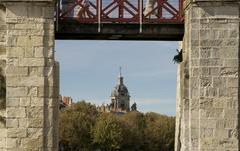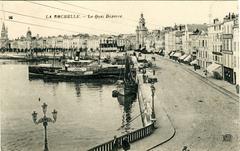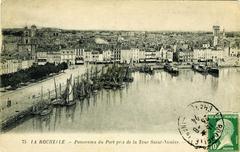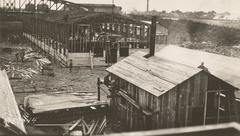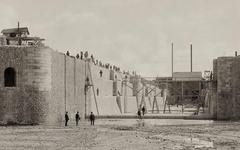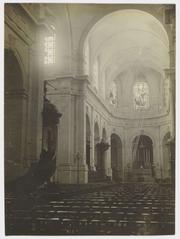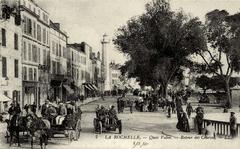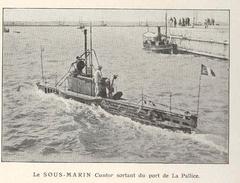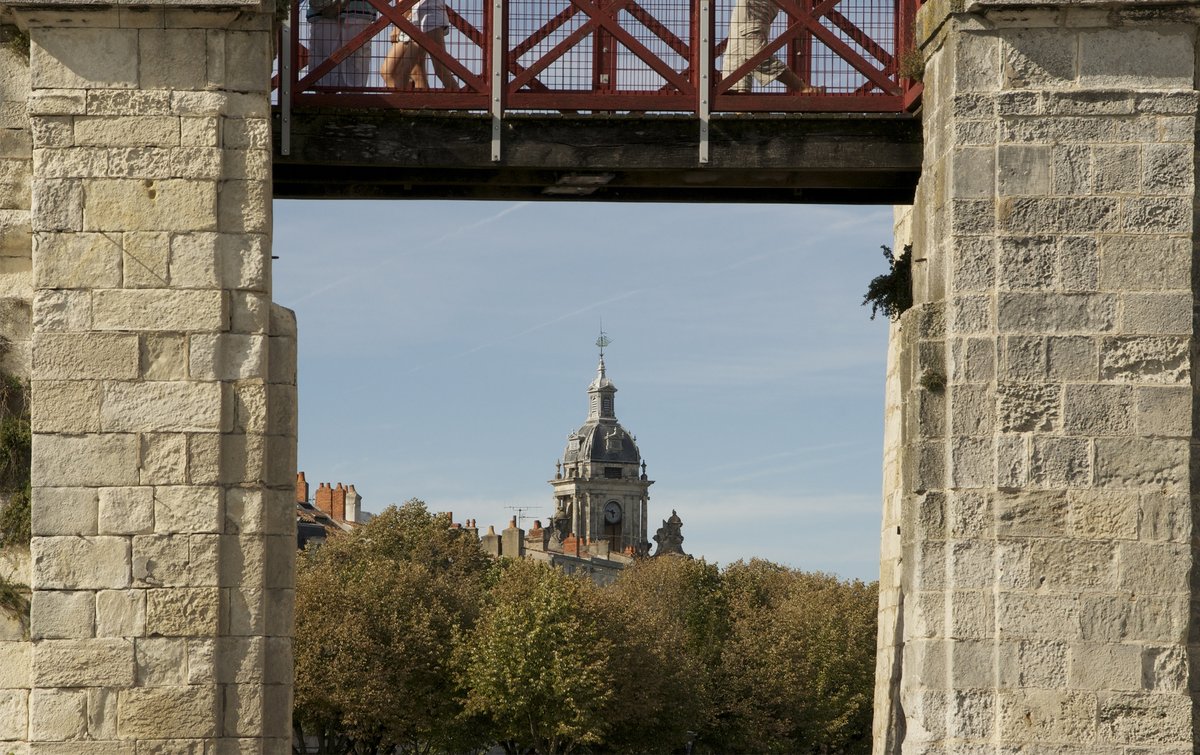
Visiting Porte de la Grosse Horloge in La Rochelle: Hours, Tickets, and Tips
Published Date: 31/07/2024
Introduction: Discover the Historic Porte de la Grosse Horloge
The Porte de la Grosse Horloge, an emblematic historical monument in La Rochelle, France, serves as a captivating gateway between the old port and the city center. This iconic landmark is not just a structural marvel but also a testament to La Rochelle’s rich medieval and maritime heritage. Constructed in the early 12th century, the Grosse Horloge originally functioned as a city gate and part of the fortifications of La Rochelle. Over the centuries, it has undergone several transformations, evolving from a defensive structure to a civic monument adorned with a clock and bell tower (source).
The Grosse Horloge’s significance is further highlighted by its architectural evolution. From its medieval origins with distinct openings for carts and pedestrians, to its 15th-century enhancement with an octagonal bell tower, and its 18th-century redesign in the Louis XV style, the monument reflects the historical and cultural shifts that have shaped La Rochelle (source). Today, the Grosse Horloge stands as a focal point for both locals and tourists, symbolizing the city’s enduring legacy and inviting visitors to explore its storied past.
Table of Contents
- Introduction
- Historical Background
- The Grosse Horloge Today
- Visitor Information
- Unique Aspects and Events
- FAQs
- Conclusion
Historical Background
Origins and Early History
The Porte de la Grosse Horloge, also known as the Grosse Horloge, originally served as a city gate and was part of the early medieval fortifications of La Rochelle. Constructed in the early 12th century during the establishment of the first medieval enclosure under Guillaume X of Aquitaine, the gate was initially known as the Porte du Parrot, named after the faubourg (suburb) it provided access to (source).
Architectural Evolution
The original structure featured two distinct openings: a larger one for carts and a smaller one for pedestrians. In 1478, significant modifications were made, including the addition of an octagonal bell tower topped with a campanile to house a clock bell, transforming the gate from a defensive structure to a civic monument (source).
The Addition of the Clock
In the late 15th century, the citizens of La Rochelle pressured the municipal authorities to install a public clock, leading to the transformation of the defensive gate into the Grosse Horloge. The octagonal bell tower, housing the clock bell, became a significant architectural feature that closely resembled the Cailhau gate (source).
17th and 18th Century Modifications
In 1672, the two original openings of the gate were merged into a single arch to facilitate traffic flow. Further modifications were made in 1746 when the upper part of the structure was redesigned in the Louis XV style, including a cartouche flanked by scientific and military attributes, reflecting the Enlightenment ideals of the period (source).
The 19th and 20th Centuries
During the 19th and 20th centuries, the Grosse Horloge housed an archaeological museum related to the Templars of La Rochelle. Between 1901 and 1929, a tramway line passed under the Grosse Horloge, connecting the port to the Place de Verdun, demonstrating the gate’s continued relevance in the urban landscape (source).
The Grosse Horloge Today
Today, the Grosse Horloge is one of the most iconic landmarks of La Rochelle, serving as a main passage point between the quays and the old town. The structure is open to visitors year-round, allowing them to explore its architectural features and historical significance. It continues to be a focal point for both locals and tourists, embodying the rich cultural heritage of La Rochelle (source).
Visitor Information
Visiting Hours and Tickets
The Grosse Horloge is open to visitors daily from 10:00 AM to 6:00 PM. Admission is free, but donations are encouraged to support the preservation of the monument. Special guided tours are available upon request, providing deeper insights into the history and architecture of the site.
Travel Tips
- Getting There: The Grosse Horloge is conveniently located between the old town and the quays. It is easily accessible by foot, bicycle, or public transportation.
- Nearby Attractions: Include the three medieval towers and the Aquarium of La Rochelle, which provide a comprehensive experience of the city’s rich history and cultural offerings.
- Accessibility: The site is accessible to visitors with disabilities, with ramps and informative plaques available throughout the structure.
Unique Aspects and Events
The Grosse Horloge hosts various special events and exhibitions throughout the year, celebrating La Rochelle’s heritage. It is also a popular spot for photography, offering stunning views of the old town and the quays.
FAQs
Q: What are the visiting hours for the Grosse Horloge? A: The Grosse Horloge is open daily from 10:00 AM to 6:00 PM.
Q: Is there an admission fee to visit the Grosse Horloge? A: Admission is free, but donations are encouraged.
Q: Are guided tours available? A: Yes, special guided tours are available upon request.
Conclusion
The Grosse Horloge of La Rochelle is a testament to the city’s historical evolution and cultural heritage. From its origins as a medieval city gate to its current status as a beloved landmark, the Grosse Horloge continues to captivate visitors with its rich history and architectural beauty. Plan your visit today to explore this iconic site and immerse yourself in the unique charm of La Rochelle.
Call to Action
For more information on visiting the Grosse Horloge and other historical sites in La Rochelle, download our mobile app Audiala, check out our related posts, and follow us on social media for more updates.
Summary and Final Thoughts
The Porte de la Grosse Horloge is more than just a historical gate; it is a symbol of La Rochelle’s rich cultural heritage and architectural prowess. From its medieval beginnings as a part of the city’s fortifications to its current status as a beloved landmark, the Grosse Horloge encapsulates the historical evolution and cultural vibrancy of La Rochelle. Visitors are drawn to its stunning architecture, historical significance, and the unique charm that it adds to the cityscape (source).
Whether you’re exploring the Grosse Horloge’s architectural features, participating in a guided tour, or simply enjoying the surrounding attractions, this iconic monument offers a comprehensive experience of La Rochelle’s past and present. Its accessibility, free admission, and central location make it an essential stop for anyone visiting the city. By preserving and celebrating the Grosse Horloge, La Rochelle continues to honor its historical roots while welcoming new generations of visitors to experience its timeless beauty (source).
